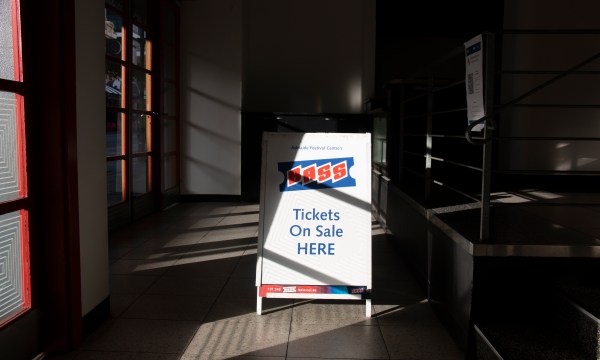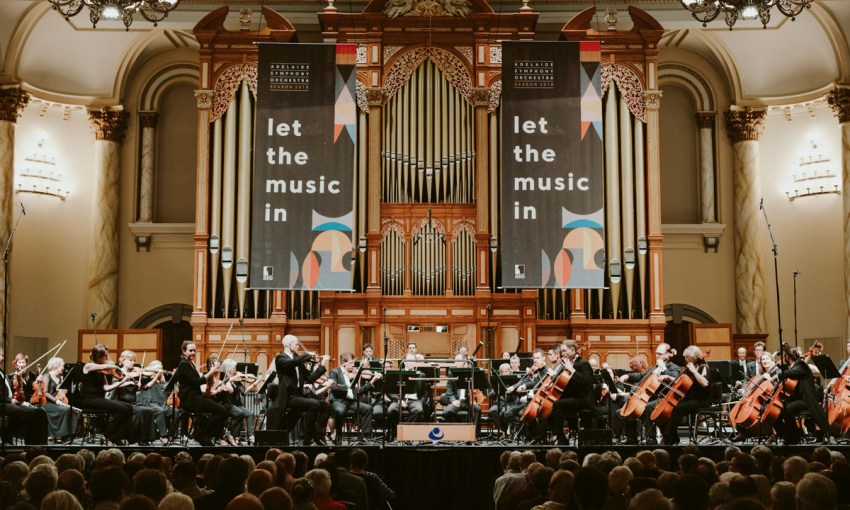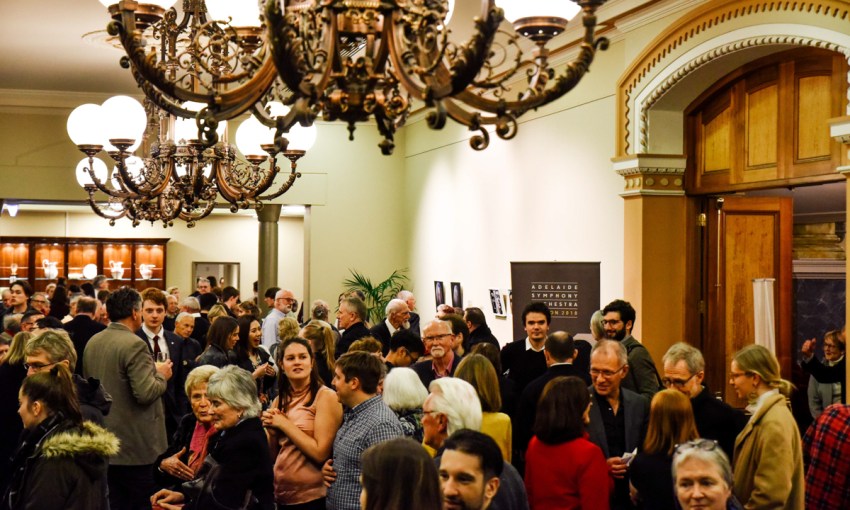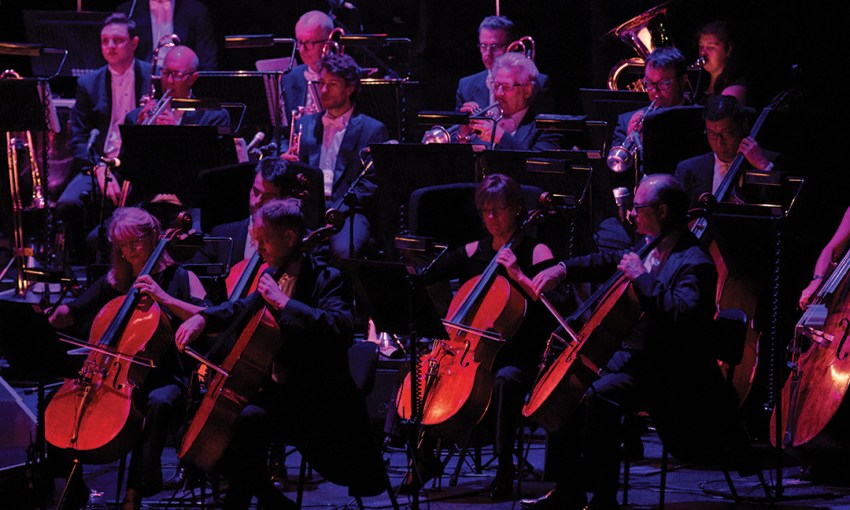The Adelaide Symphony Orchestra is the largest performing arts organisation in the state, with an 85-year history, but it faces a new challenge – locking in new audiences.
How the Adelaide Symphony Orchestra is remaining relevant
The incongruous Hindley Street headquarters of the Adelaide Symphony Orchestra in the postcode 5000 hits CityMag as amusing.
The building was formerly a cinema, and screened its final film, Edward Scissorhands, in 1991. The structure was briefly revived as a nightclub before shuttering, then opened once again in 2001 as Grainger Studio and the official home of the ASO.
The two-storey art-deco building is currently sandwiched between an old colonial hotel and a minimart. It’s also a stone’s throw from other music institutions, such as live music and DJ venues Rocket Rooftop and Ancient World.
—Vincent Ciccarello
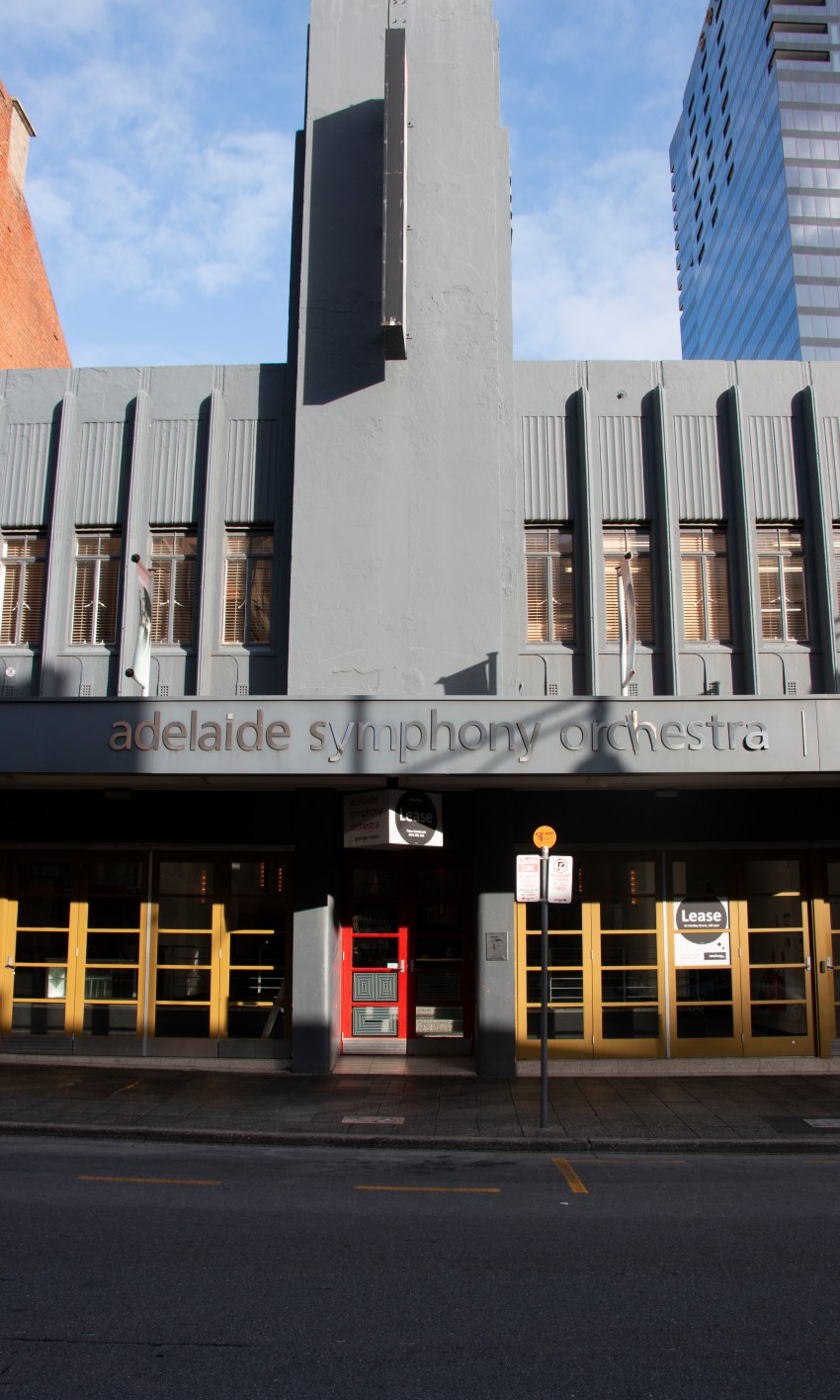
Though the building is located on Hindley Street, the city’s most notorious party strip, the building houses musical greats. Vincent Ciccarello has been the orchestra’s managing director for almost eight years, and describes the 75-person ensemble as a team of “crack specialists”.
“They’re elite athletes,” he says, “and they need to be at the top of their game.”
The ASO’s core business is performing classical orchestral pieces to roughly 100,000 concert-goers each season – symphonies by Beethoven, Johannes Brahms and Gustav Mahler, Vincent says.
This repertoire is what the musicians consider “high points” in their career, work in which they’re able to flex their musical muscles.
According to internal research, half of the orchestra’s core audience is aged 60 and over, which means the classical programming lines up, ostensibly, with the ASO’s audience base.
“But that means 50 per cent are under 60,” Vincent says.
“I like to say we’re not ageist – we’re happy for people to come to concerts no matter what age they are. We want to encourage young people to come along because we want to make sure that they’re exposed to and have the experience of the orchestra.”
There is a question that hovers over this musical institution, though, which we put to Vincent: Is he concerned about the moment when the ASO’s sexagenarian-and-up subscriber base (to put it gently) ages out and disappears?
“If you’d asked me that question 20 years ago, I would have had a different answer,” he says. “We were much more panic-stricken.
“I think today, we understand that orchestra plays for lots of diverse and different audiences and will continue to do that and get better at it.
“Orchestras around the world, including the ASO, have really diversified over the past 40 years, and really sharply over the past 20 years.
“The orchestra plays for lots of diverse and different audiences and will continue to do that and get better at it.”
The ASO’s recent programming does lean towards younger tastes. Most noticeably, the ASO is next month performing an orchestral concert of songs by hip-hop luminaries The Avalanches at the Entertainment Centre.
The ASO is even hosting a “symphonic dance music experience” – with Eurovision contestant Montaigne, DJ Groove Terminator and vocalist Adrian Eagle – as part of a Ministry of Sound-branded event at the Adelaide Showgrounds in November.
The contemporary capstone, however, was the ASO’s facilitation of a mini-festival by local composer and instrumentalist Anne Cawrse, called She Speaks. The event series was conceived to facilitate the performance of live orchestral works not written by “dead white men”, as Anne told us in June.
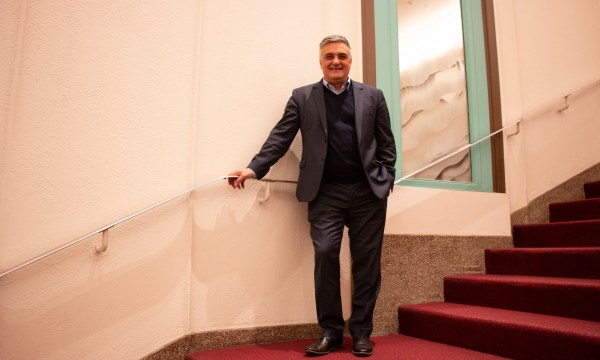
Vincent Ciccarello
Vincent says the organisation engages young people in a variety of ways, spanning educational programs for school students to making concerts accessible and affordable for young adults.
“We also have a live music pass program,” Vincent says, “so any full-time student 15 or above can buy a live music pass at $50, which allows you entry to pretty much everything that we do.
“We want to find a way to incentivise younger people to attend… There are young people who have lots of different options available to them [on the street outside] and lots of different musical genres and that kind of thing. So one thing that we don’t want is for price alone to be the barrier.
“But also, I think the most obvious way we do it is just through the range of our programming.
“You’ll see that we do concerts when we’re playing live with films, and those films range from Star Wars through to Harry Potter right through to Disney, Toy Story and things like that.”
Although these aren’t the grand concertos the musicians usually enjoy playing, they’re happy to “roll-up their sleeves and muck-in.”
Vincent says the greatest selling point the ASO has for young people is that orchestras have well and truly moved beyond the notion of being stuffy and highbrow. No longer are they “only for elite audiences in the eastern suburbs,” he says.
“The pitch would be to have an open mind and come with open ears, and open eyes and an open heart, and chances are you’ll enjoy it.”
